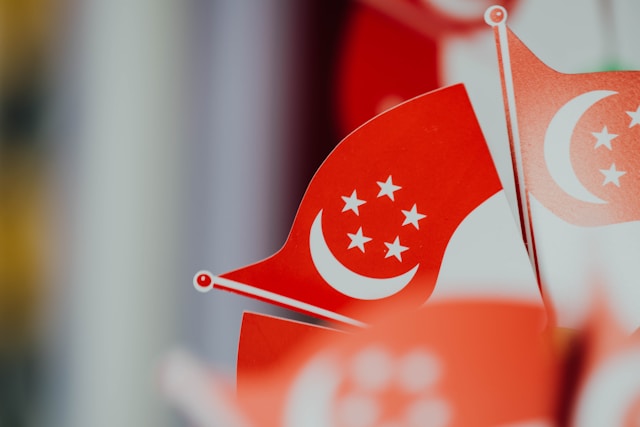
Key takeaways:
- As of 2021, only 6 bankruptcy proceedings initiated by mainland Chinese courts have been recognized by foreign courts, including 3 by Hong Kong courts, 2 by US courts, and 1 by Singapore courts.
- Viewed from the current, albeit few, cross-border bankruptcy practices since the implementation of the PRC Enterprise Bankruptcy Law in 2007, in all such cases it is the administrator who directly applies to foreign courts for recognition.
- There are two specific modes of application for recognition in foreign courts: mode A ‘the administrator cooperates with the court’ and mode B ‘the administrator applies directly to the foreign court’. Mode B was adopted in the Sainty Marine Development Case, with the Nanjing Intermediate Court providing guidance to the administrator throughout the proceedings.
In the recognition and assistance procedures for cross-border bankruptcy cases, Chinese courts are attempting to provide guidance to the bankruptcy administrator to directly apply to foreign courts for recognition and assistance.
An article titled “New Exploration of Cross-border Bankruptcy Recognition and Collaboration: The View from the Case Where the Singapore High Court Recognizes China’s Main Bankruptcy Proceedings and the Capacity of the Administrator for the First Time” (跨境破产承认与协作的新探索——以全国首例新加坡高等法院认可我国主程序及管理人身份案为视角) by Judge Wang Jing (王静) of the Nanjing Intermediate People’s Court (the “Nanjing Intermediate Court”) was published in “People’s Judicature” (人民司法) (No. 16, 2022).
The said article introduces a bankruptcy case accepted and tried by the Nanjing Intermediate Court, and then goes through the application for recognition and assistance with Singapore. The highlights of this article are summarized below.
I. China’s exploration of cross-border bankruptcy
China has not yet enacted specific legislation on cross-border bankruptcy. Article 5 of the existing PRC Enterprise Bankruptcy Law only provides for generalized principles for cross-border bankruptcy while failing to cover certain important details. Against that backdrop, China’s Supreme People’s Court (“SPC”) is now attempting to “enrich” the PRC Enterprise Bankruptcy Law.
Related Posts:
- How Chinese Judges Recognize Foreign Bankruptcy Judgments
- China Recognizes Another German Bankruptcy Judgment in 2023
- The First Time Chinese Court Recognizes Singapore Bankruptcy Judgment
On 14 May. 2021, the SPC and the Government of the Hong Kong Special Administrative Region signed the “Record of Meeting of the Supreme People’s Court and the Government of the Hong Kong Special Administrative Region on Mutual Recognition of and Assistance to Bankruptcy (Insolvency) Proceedings between the Courts of the Mainland and of the Hong Kong Special Administrative Region” (关于内地与香港特别行政区法院相互认可和协助破产程序的会谈纪要, hereinafter referred to as the “Record of Meeting”), which is the first specialized document on cross-border bankruptcy assistance issued by the SPC.
On the same day, the SPC issued the “Opinion on Taking Forward a Pilot Measure in relation to the Recognition of and Assistance to Insolvency Proceedings in the Hong Kong Special Administrative Region” (关于开展和认可协助香港特别行政区破产程序试点工作的意见, hereinafter referred to as the “Pilot Opinions”), specifying cross-border bankruptcy mutual recognition and assistance pilot projects between courts in Shanghai, Shenzhen, and Xiamen and courts in Hong Kong.
However, as of 2021, only 6 bankruptcy proceedings initiated by Chinese courts have been recognized by foreign courts, including 3 by Hong Kong courts, 2 by US courts, and 1 by Singapore courts.
Specifically, these cases are:
- (1) In 2001, the High Court of Hong Kong recognized the bankruptcy case of Guangdong International Trust and Investment Co., Ltd. (广东国际信托投资公司) tried by the Guangdong High People’s Court;
- (2) In 2019, the High Court of Hong Kong recognized the bankruptcy case of Shanghai Huaxin International Group Co., Ltd. (上海华信国际集团有限公司) and its affiliates tried by the Shanghai Third Intermediate People’s Court;
- (3) In 2020, the High Court of Hong Kong recognized the bankruptcy case of Shenzhen Nianfu Supply Chain Co., Ltd. (深圳市年富供应链有限公司) tried by the Shenzhen Intermediate People’s Court, Guangdong;
- (4) In 2014, the U.S. Bankruptcy Court for the District of New Jersey recognized the bankruptcy case of Zhejiang Jianshan Optoelectronics Co., Ltd. (浙江尖山光电有限公司) tried by the Haining Primary People’s Court, Zhejiang;
- (5) In 2019, the United States Bankruptcy Court for the Southern District of New York recognized the bankruptcy case of Lova Technology Industrial Group (洛娃科技实业集团) tried by the Chaoyang Primary People’s Court, Beijing; and
- (6) In 2020, the High Court of Singapore recognized the bankruptcy case of Sainty Marine Development Corporation Limited (江苏舜天船舶发展有限公司, hereinafter the “Sainty Marine Development Case”) tried by the Nanjing Intermediate People’s Court, Jiangsu.
II. Sainty Marine Development Case
1. Case background
In this case, the bankruptcy administrator found that Sainty Marine Development Corporation Limited (“Sainty Marine Development”) holds 70% of the equity of Sainty Marine (Singapore) Pte Ltd (“Sainty Singapore”), which still owns several ships and other assets.
Under the guidance of the Nanjing Intermediate Court, the administrator applied with the High Court of Singapore for recognition of the bankruptcy proceedings initiated by Sainty Marine Development in China, and the capacity of the administrator in the bankruptcy proceedings, as well as to recognize that the administrator may exercise relevant rights on behalf of Sainty Marine Development in Singapore.
The High Court of Singapore, after a hearing, granted a recognition and assistance writ on 10 June 2020. According to the writ, the High Court of Singapore confirms that the bankruptcy proceedings of the Sainty Marine Development conducted by the Nanjing Intermediate Court comply with the foreign main proceedings provided by cross-border bankruptcy regulations, and confirms that the bankruptcy administrator, in this case, is qualified under the foreign main proceedings.
2. Foreign main proceedings in bankruptcy cases
The High Court of Singapore has confirmed that the bankruptcy proceeding initiated by Sainty Marine Development with the Nanjing Intermediate Court is a foreign main proceeding.
This is because Sainty Marine Development is registered in China, and the vast majority of its operations, control, company management and decision making, and employees are located in China.
In the absence of evidence to the contrary, the High Court of Singapore determined that the main interest of Jiangsu Shunchuan was located in China, and accordingly confirmed that the bankruptcy proceeding initiated by Sainty Marine Development with the Nanjing Intermediate Court was a foreign main proceeding.
3. Application modes for bankruptcy cases
Viewed from the current, albeit few, cross-border bankruptcy practices since the implementation of the PRC Enterprise Bankruptcy Law in 2007, in all such cases it is the administrator who directly applies to foreign courts for recognition. However, there are two specific modes of application.
Mode A: the administrator collaborates with the court. The administrator will act as the applicant, while the Chinese court accepting the bankruptcy case will issue a special letter to the corresponding foreign court, e.g., the bankruptcy case of Zhejiang Jianshan Optoelectronics Co., Ltd.
Mode B: the administrator applies with the foreign court directly. In this circumstance, the Chinese court accepting the bankruptcy case will not issue any letter to foreign courts, e.g., the bankruptcy case of Lova Technology Industrial Group, and the Sainty Marine Development Case. But in the Sainty Marine Development Case, the Nanjing Intermediate Court provided guidance to the administrator throughout the proceedings.
A commentary on the Sainty Marine Development Case can be found here on the website of the Asian Business Law Institute (ABLI).
Contributors: Guodong Du 杜国栋 , Meng Yu 余萌




